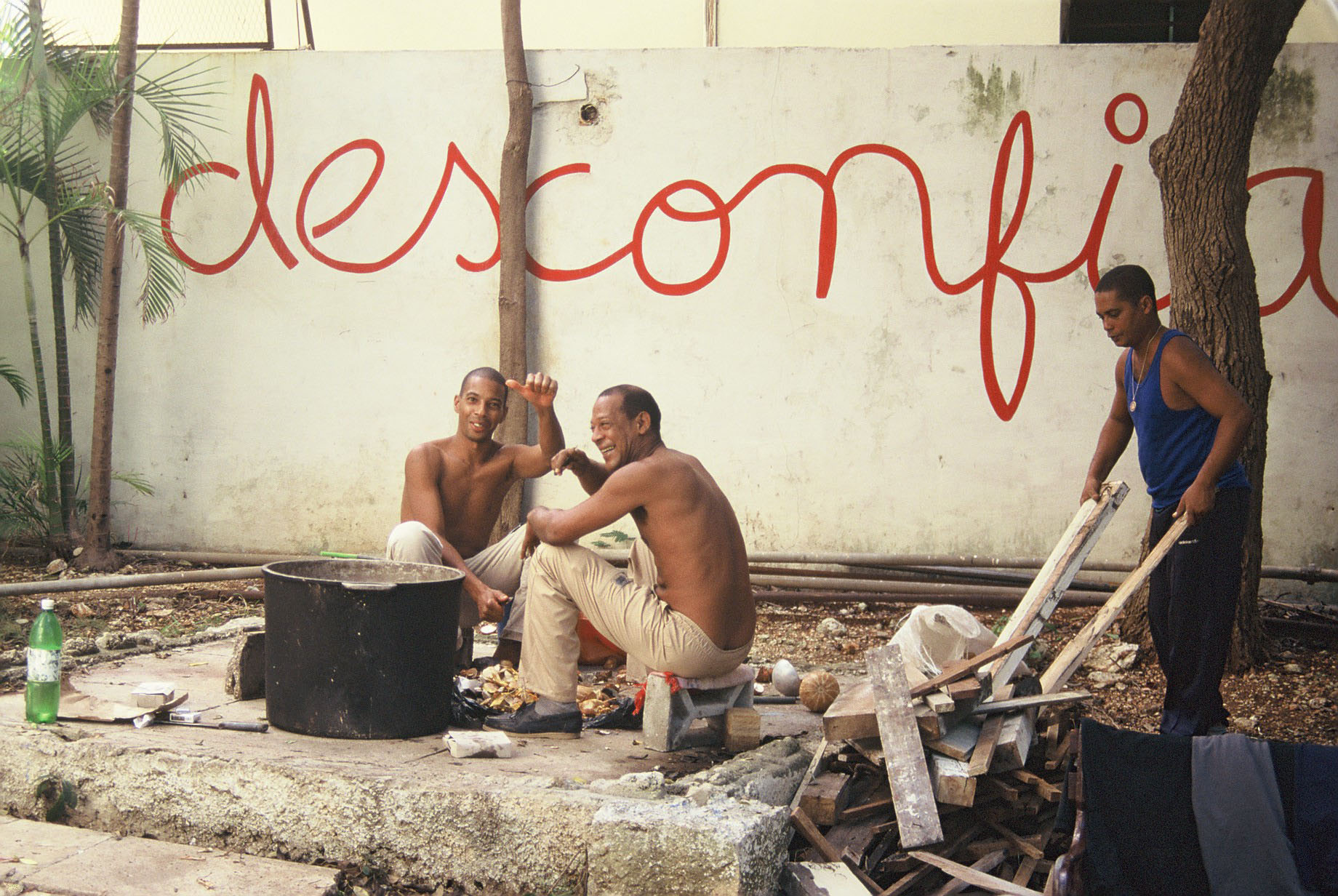…no te creas cosas
At 4D, Pabellón Cuba, Art together with life, 8th Havana Biennial, Cuba Curated by Rain: Eugenio Valdés Figueroa, Florian Zeyfang, Lisa Schmidt-Colinet, Alex Schmoeger, Siggi Hofer and Susi Jirkuff.
For …no te creas cosas (…don’t believe things) we worked in Havana, in the neighbourhood of Vedado, where the Pabellón Cuba is located. We got to know two families from the neighbourhood who then worked with us on the project. We made …no te creas cosas in the beautiful and decaying garden of the legendary Pabellón Cuba. The ‘entrance’ to the work was sawn through a balustrade at the Pabellón (see facing page, top left) and consisted of a new path leading to a clearing in the garden. In the clearing, a cairn (made of stones and corals) is surrounded by a number of borrowed rocking chairs which we restored and painted black and white (drawing their outlines), as well as a table, domestic cloth, pens and paper. A cairn is an ancient form of road-marking.
The cairn we built was a Beinakerling (Bone-Lady), an old Icelandic cultural phenomenon dating back to the 17th century. Travellers would leave erotic and pornographic poems to the Bone-Lady for other travellers to read. Writing Bone-Lady poetry became popular amongst visitors throughout the show. Young and old, women and men, heterosexual, gay and bisexual, revolutionaries and apoliticals, wrote their own pornographic and erotic poems and read those of others. We painted texts gathered from conversations with people in the neighbourhood on walls and signs we had placed in the garden. The texts read: ‘We distrust you’, ‘I have to lie’ and ‘The reason is the most sadistic’ (written in Spanish). We also put up a few empty signs. We reopened a little kiosk under the name No te creas la verdad (Don’t believe the truth), inviting our friends to sell Don’t believe the truth Rum and Bananas at the opening and a few times throughout the show (the rum was homemade). For the kiosk we commissioned a local advertisement painter to design and paint an advertising billboard in the traditional style of the Agropecuarios billboards (the state-run fruit and vegetable shops). There was a cement floor in front of the kiosk; the old foundation of a small shed, which we used for cooking on two occasions. The first meal was for all the visitors at the opening night of the Biennial and the second one was for the artists, staff and curators involved in the Biennial at the Pabellón. Both meals were Caldosas – a big collective soup of various ingredients. In another shed and on a few trees in the garden we presented, as colour photocopies, the photo series 115 Bajos Esmeralda, shot in the neighbourhood of Vedado.







